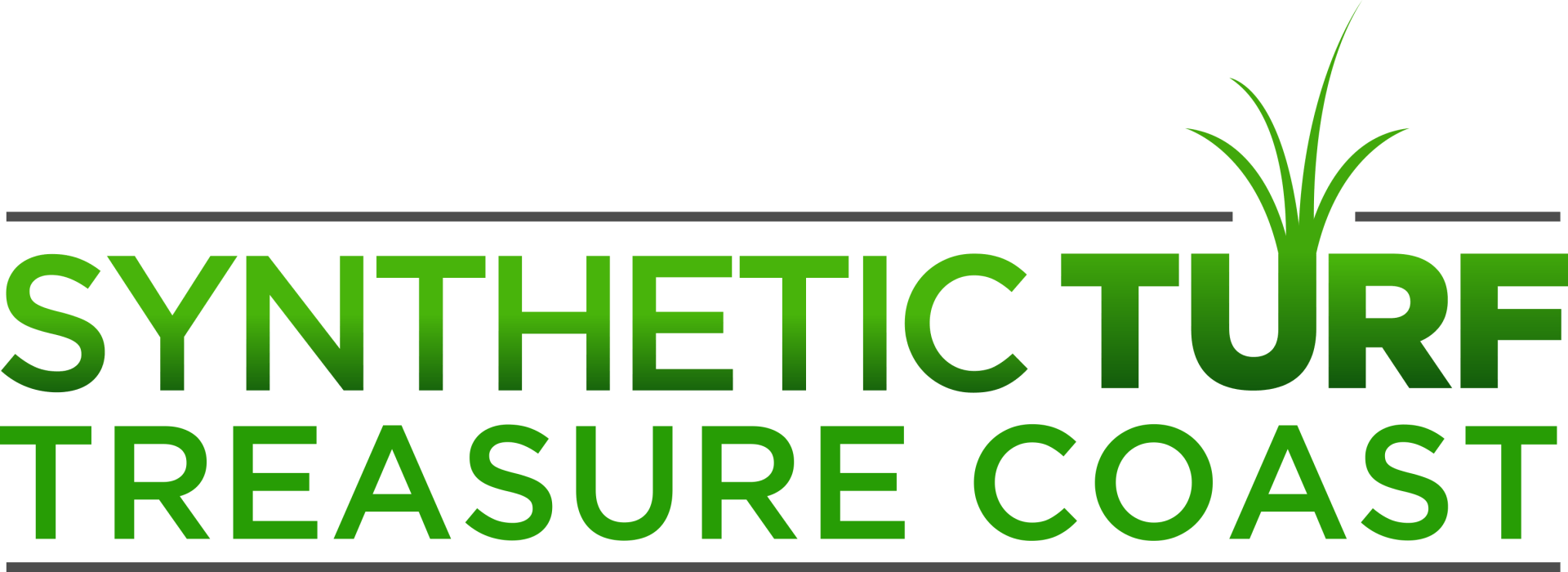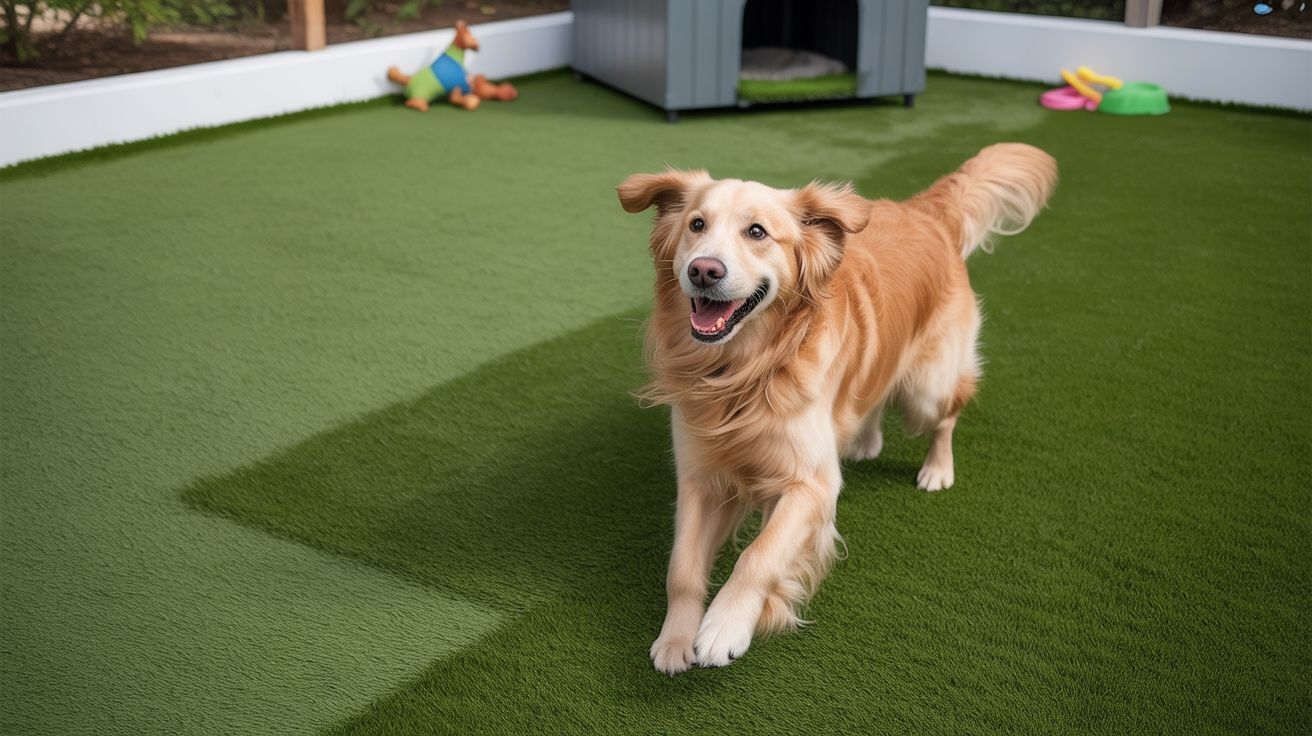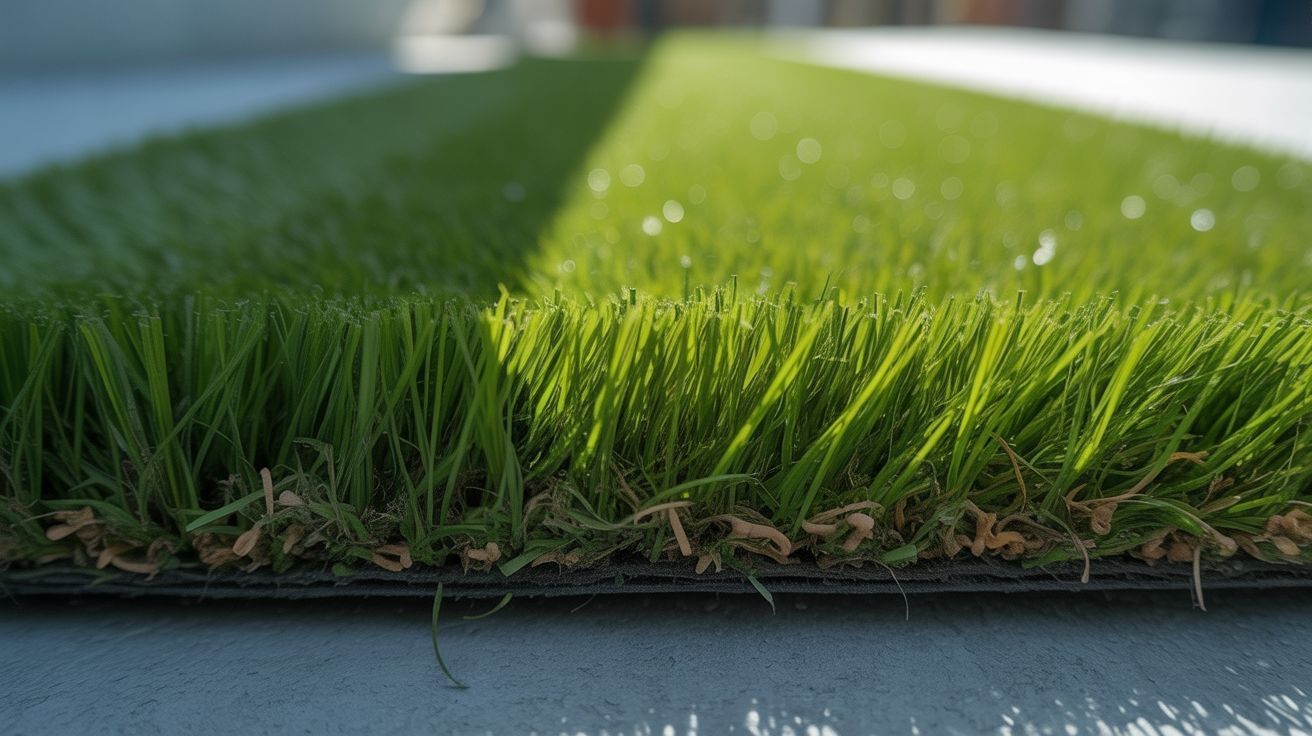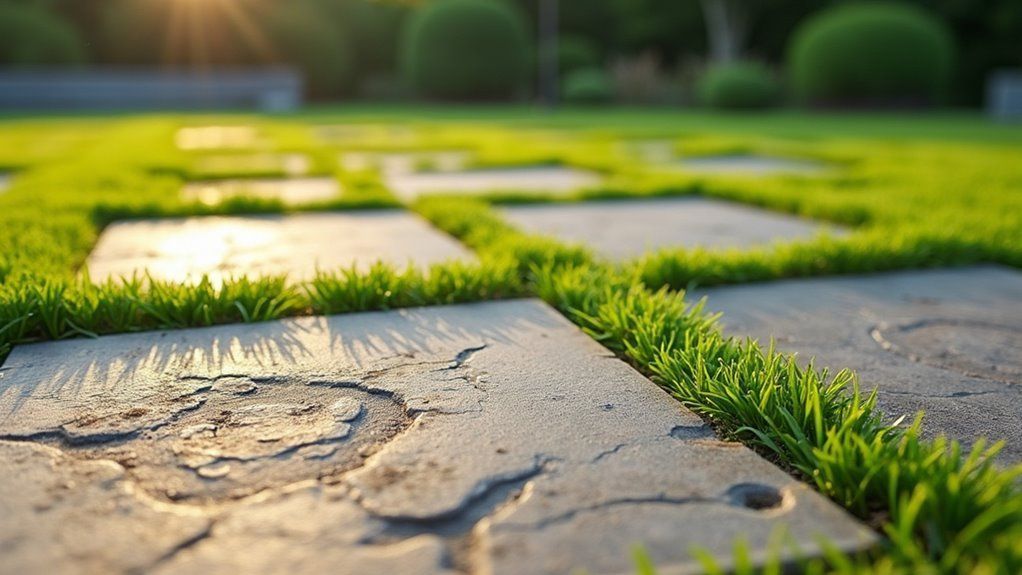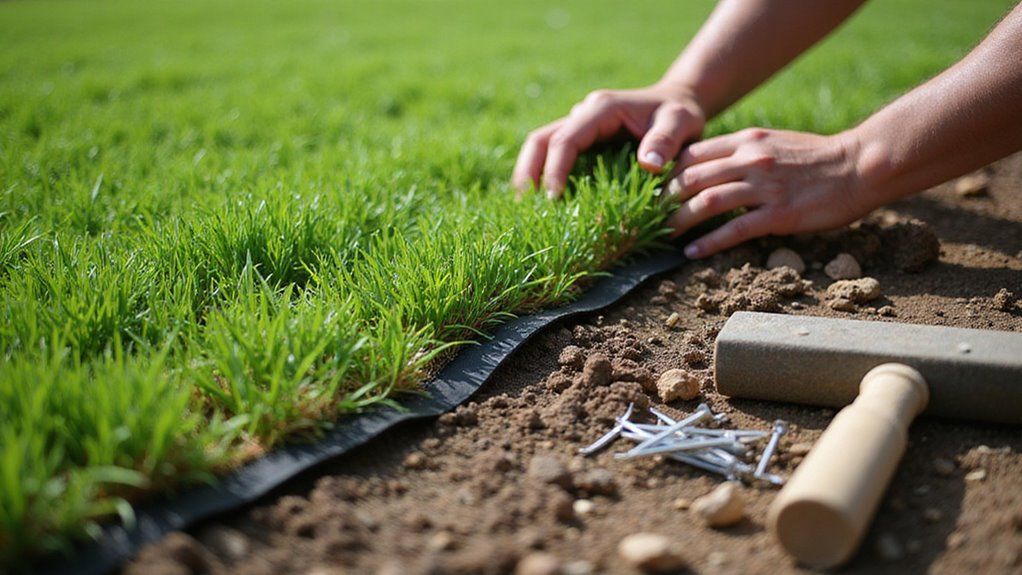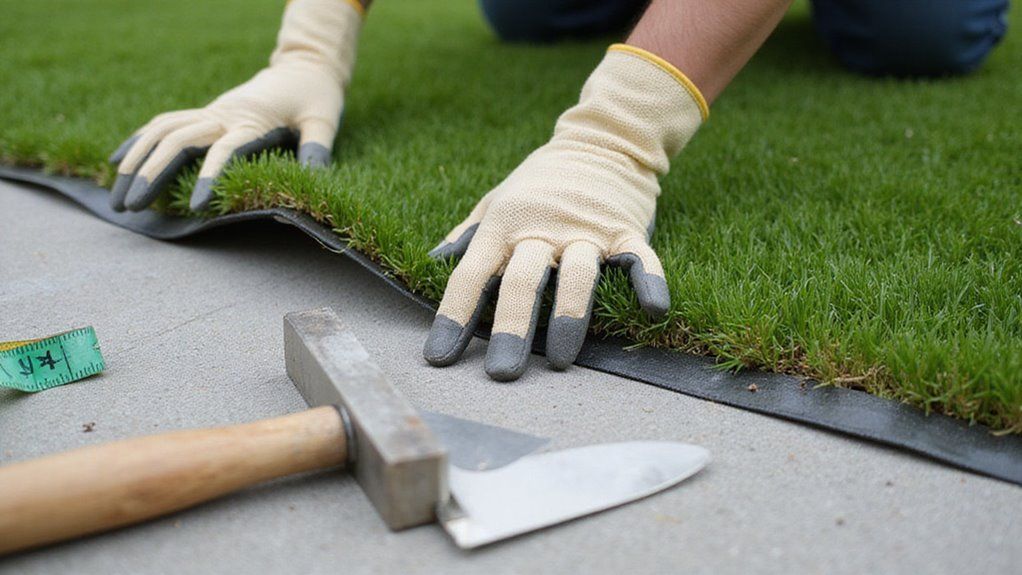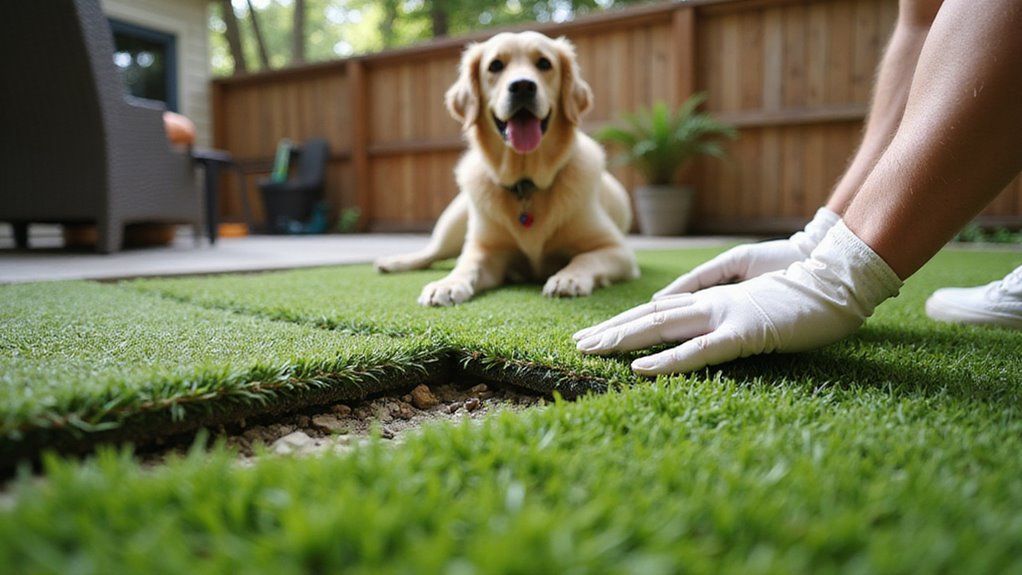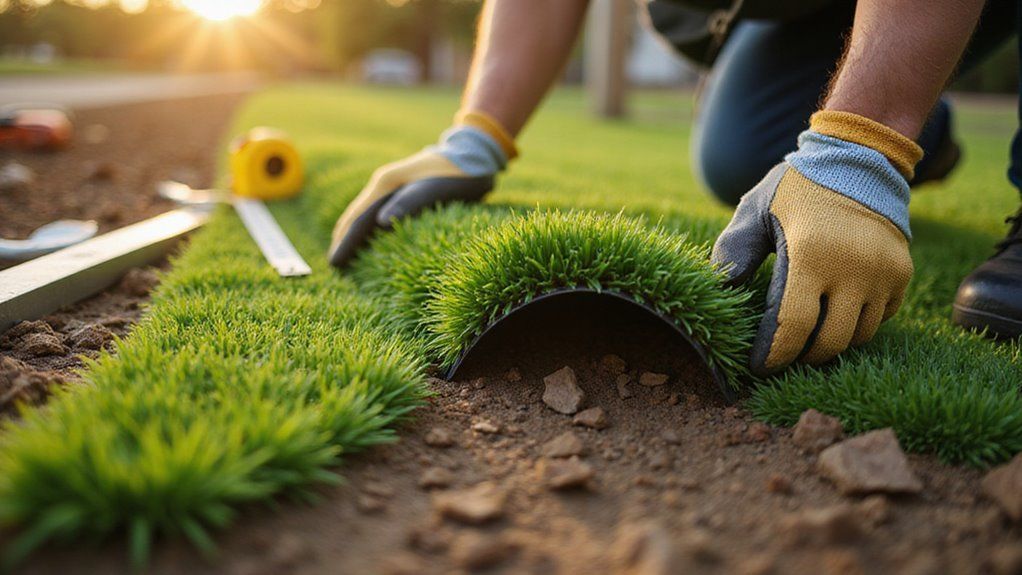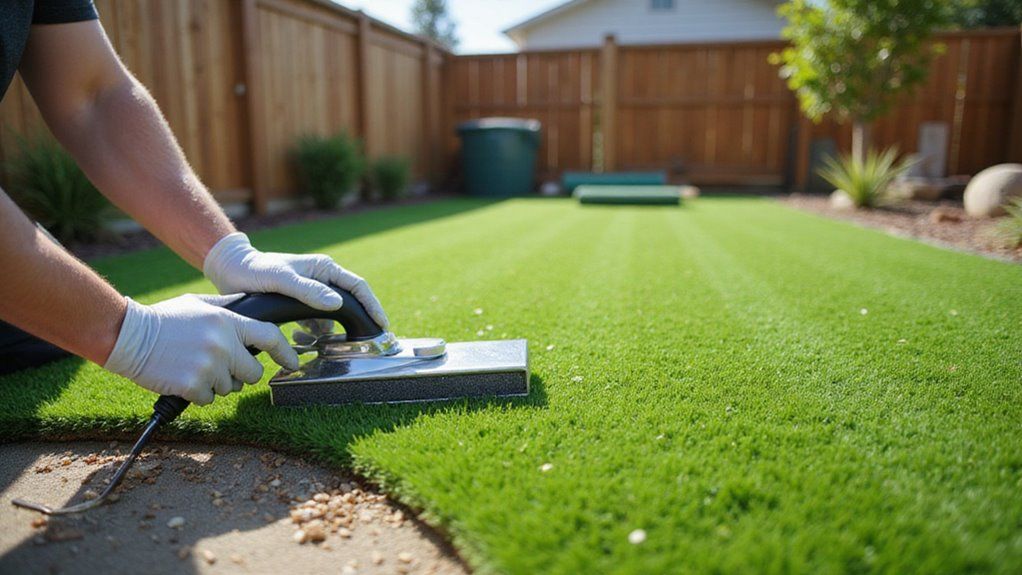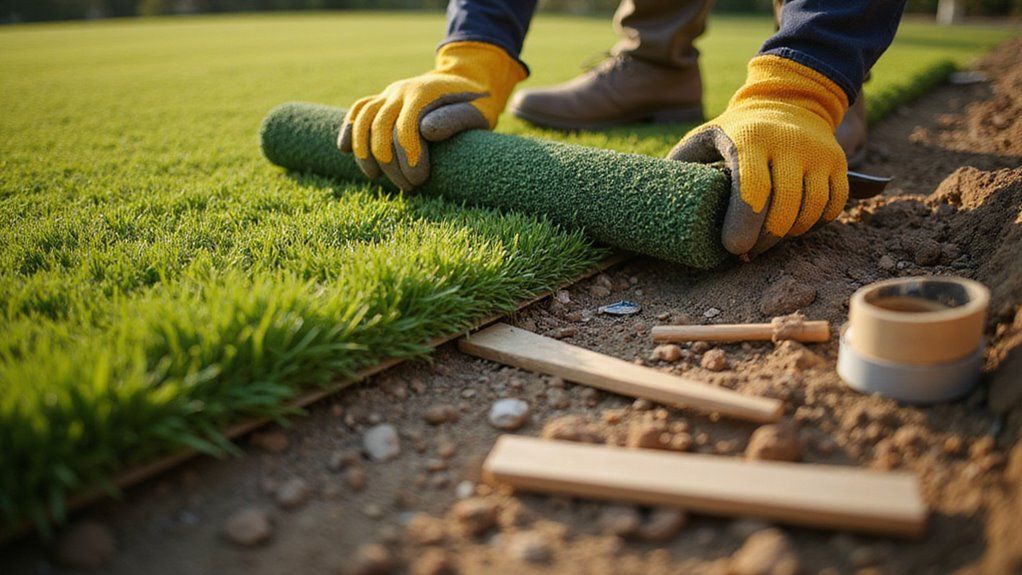How to Install Artificial Grass on Soil
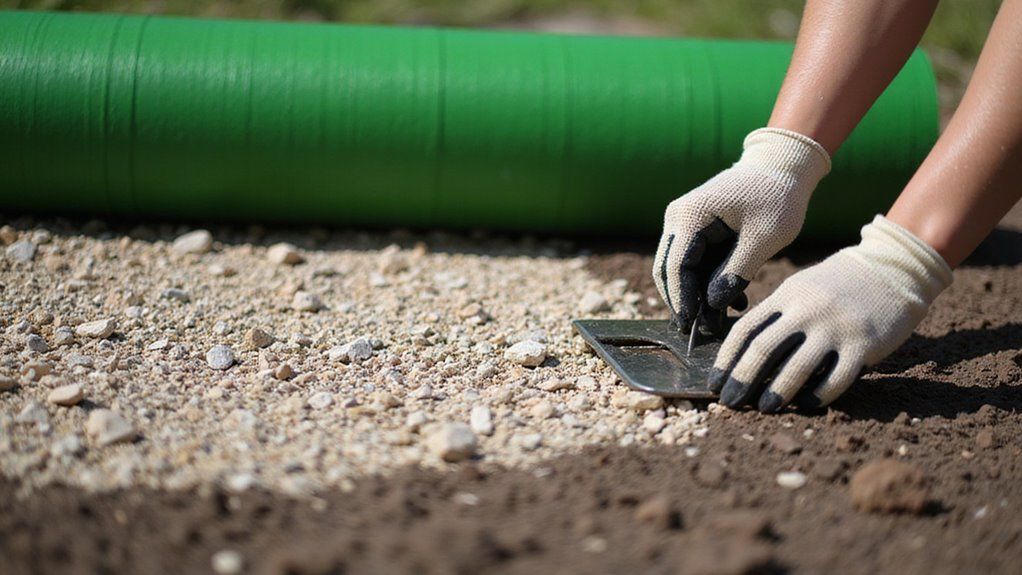
Gone are the days of mowing, watering, and maintaining natural grass in your backyard. Many homeowners struggle with keeping their lawns green and healthy throughout the year. The constant maintenance, water bills, and seasonal challenges can drain both your energy and wallet. Artificial grass offers a permanent solution that eliminates these hassles while maintaining a pristine appearance.
Installing artificial grass starts with marking underground utilities and removing 3-4 inches of existing soil. Create proper drainage with a 1-inch slope per 8 feet, install weed barrier fabric, and add crushed granite base. Secure the turf with fasteners, apply seaming tape, and add infill material.
This comprehensive guide explores every aspect of installing artificial grass on soil surfaces effectively.
Key Takeaways
- Remove existing vegetation and excavate 3-4 inches of soil, ensuring ground slopes 1 inch per 8 feet for drainage.
- Install weed barrier fabric over compacted soil to prevent future weed growth beneath the artificial turf.
- Add 4 inches of crushed granite base material, compacting each layer to 95% for stability and drainage.
- Secure turf with galvanized fasteners and use seaming tape with adhesive to join sections seamlessly together.
- Apply 2-3 pounds per square foot of infill material using a drop spreader, then brush fibers upright.
Why Choose Artificial Grass for Your Florida Home?
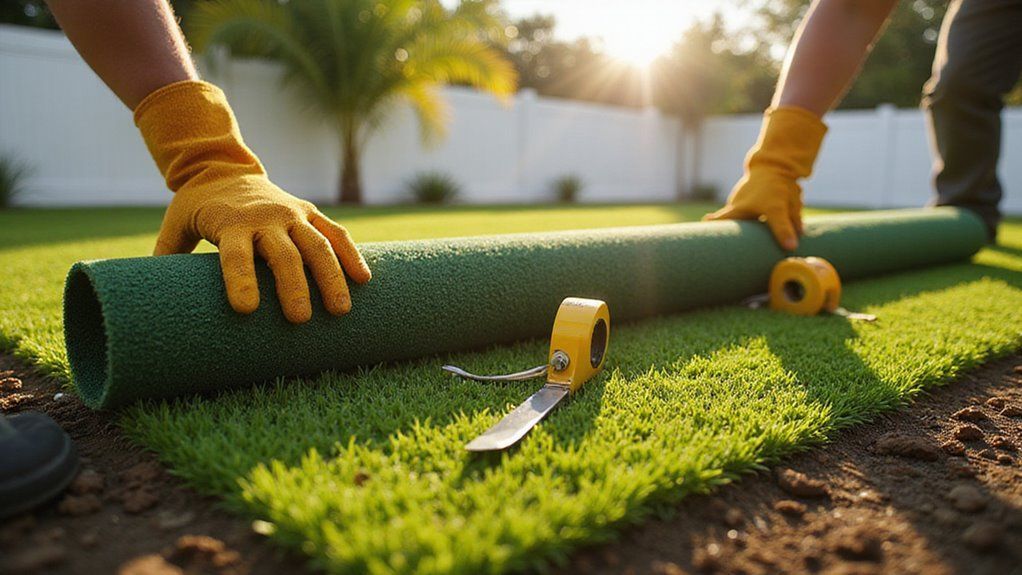
Artificial grass offers an ideal solution for Florida homeowners facing tough landscaping challenges. The synthetic turf handles intense heat and heavy rainfall while requiring minimal upkeep. A properly installed artificial lawn can reduce water usage by up to 70% compared to natural grass.
Moreover, this low-maintenance option eliminates the need for pesticides and fertilizers that harm local waterways. The initial investment pays off through years of consistent performance and reduced maintenance costs. Florida homeowners typically save $800-1200 annually on lawn care expenses.
To ensure success, proper drainage installation prevents water pooling during storms. The artificial surface stays green and pristine year-round without weekly mowing or watering schedules.
What Tools and Materials Do You Need?
Before breaking ground on your artificial turf project, you’ll need to assemble specific tools and acquire materials in proper quantities to ensure a professional installation.
Your equipment list divides into essential installation tools, base materials calculated by square footage, and turf components including seam tape, infill, and securing hardware. Consider whether renting heavy equipment like a plate compactor proves more cost-effective than purchasing, especially for single-use residential projects.
Essential Tools for Installation
Essential tools for artificial grass installation fall into three main categories: base preparation, turf placement, and safety equipment.
Base preparation requires a plate compactor, landscape rake, crushed granite (3-4 inches), and weed barrier fabric. A utility knife, tape measure, straight edge, seaming tape, and turf adhesive handle the turf placement phase.
To ensure safety and comfort during installation, workers need protective gloves, knee pads, and eye protection. Additionally, professional-grade infill material delivers the final realistic look. Before any digging begins, contractors must call 811 to check for underground utilities.
Required Materials and Quantities
Required materials for artificial grass installation include three essential components. For every 100 square feet, you need 1 ton of crushed granite base, 110 square feet of weed barrier fabric, and 50 galvanized nails or staples. The crushed granite creates proper drainage beneath the turf surface. Weed barrier prevents unwanted plant growth through the artificial grass. Metal fasteners secure edges for a professional finish.
As a crucial safety measure, contacting 811 before any digging protects underground utilities and prevents costly damages or injuries. This free service marks utility lines in your work area.
Rental vs. Purchase Considerations
Rent equipment for one-time artificial grass installations. Purchase tools needed for maintenance and regular use.
A typical homeowner needs to rent heavy machinery like plate compactors and sod cutters for $50-100 per day. Basic tools such as rakes, levels, and utility knives cost under $100 total to buy outright.
Consider local delivery charges when choosing rental companies. Some vendors offer free delivery above certain rental amounts. Professional equipment stores often provide better maintenance and support than general rental shops.
How to Prepare Your Soil for Artificial Grass?
Proper soil preparation is critical for artificial grass longevity and drainage performance in Florida’s high-rainfall climate. Before installation, you must remove all existing vegetation, assess soil composition and drainage capacity, and establish a stable, properly sloped base using compacted non-limestone aggregate.
Call 811 to mark underground utilities before excavation, then systematically address each preparation phase to prevent water pooling and premature turf failure.
Removing Existing Vegetation
Remove all grass, weeds, roots, and organic material completely from the installation area. A depth of 3 to 4 inches must be excavated to create proper drainage and stability.
Call 811 first to identify underground utility lines before any digging begins. This safety step protects both property and people during the removal process.
The ground should slope 1 inch for every 8 feet to ensure proper water drainage.
After clearing vegetation, compact the soil thoroughly. Subsequently, install a weed barrier to prevent unwanted growth. These preparation steps help artificial grass last longer in Florida’s climate.
Soil Testing and Treatment
Test soil quality before installing artificial grass to ensure proper drainage and stability. A simple drainage test requires digging a 12-inch hole and filling it with water. The water should drain within 15 minutes for ideal conditions. Sandy soils offer excellent drainage, while clay soils need extra preparation.
Apply an eco-friendly herbicide to eliminate existing weeds and prevent future growth. This critical step protects the turf installation. Furthermore, proper soil treatment extends the lifespan of artificial grass.
Contact utility services at 811 before any digging to avoid damaging underground lines. Professional soil preparation creates a stable foundation for long-lasting artificial turf performance.
Creating Proper Drainage Solutions
Proper drainage prevents water accumulation and extends artificial turf lifespan. A well-designed drainage system starts with a solid foundation of crushed stone.
Create layers by adding 4 inches of crushed granite or stone as the base material. Compact each 1-inch layer with a mechanical plate compactor for stability. Add a weed barrier and finish with sharp sand for perfect leveling.
Most importantly, contact utility services before any digging work begins. Safety comes first, and utility damage can cause serious problems. As a result, your artificial turf will maintain its shape and function properly for many years.
Leveling and Compacting the Base
Level and compact your base in three key steps: spread crushed stone, grade for drainage, and compact thoroughly. Add 3 to 4 inches of crushed stone or granite across the entire prepared area. The stone creates a stable foundation for the artificial turf installation. Rake the base to achieve a 1-inch slope for every 8 feet to direct water away from buildings.
A plate compactor ensures proper density and prevents future settling. Check the surface with a level at multiple spots. Before any digging, contact utility services for safety clearance. This preparation prevents water pooling and extends turf life in rainy climates.
What Are the Best Base Materials for Florida Climate?
Selecting the right base materials directly impacts your artificial turf’s drainage performance and longevity in Florida’s high-rainfall, high-heat environment. You’ll need to evaluate crushed stone options—avoiding limestone due to drainage impediments—and integrate compatible sand selections that prevent water pooling while supporting proper compaction.
Regional soil conditions, including Florida’s sandy or clay-heavy substrates, require specific base adjustments to achieve the recommended 1-inch-per-8-foot slope and ensure long-term structural stability.
Crushed Stone Options
Best Crushed Stone Types for Artificial Turf
Four proven crushed stone options work well as artificial turf base material. Crushed granite offers superior drainage and moisture resistance. Decomposed granite creates excellent water flow while maintaining stability. Three-quarter inch crushed rock serves as the industry standard choice.
Traditional limestone performs poorly in Florida’s climate. A proper stone base prevents future turf issues and extends installation life. Thorough compaction remains essential for long-term success.
The right stone choice directly impacts drainage quality and turf stability. Each stone layer needs 95% compaction rates before artificial grass installation. Smart base material selection leads to better performance in Florida’s humid conditions.
Sand Selections for Drainage
Sharp sand and concrete sand are ideal for artificial turf drainage in Florida. Sharp sand contains angular particles that lock together firmly while allowing water flow. Concrete sand delivers excellent drainage at lower costs. A proper installation needs a 1-inch layer over the stone base.
Fine beach sand must be avoided due to moisture retention issues. This careful sand selection prevents water pooling during heavy rains. Moreover, the right drainage supports proper turf infill distribution and long-term stability. The drainage layer requires professional installation with specific sand types to maintain performance standards.
Regional Considerations for Florida Soil
Florida’s soil requires specific preparation for artificial grass installation due to its sandy, acidic nature. A proper base needs at least 4 inches of crushed limestone or granite aggregate. The subgrade must be well-compacted to prevent future shifting or sinking. The surface should maintain a 1% grade for effective drainage.
Sandy soil benefits from added stabilizers to improve compaction rates. A high-quality weed barrier becomes essential in Florida’s warm climate to block aggressive plant growth. Professional installation methods help protect against unique challenges like extreme heat and heavy rains.
How to Install Artificial Grass Step by Step?
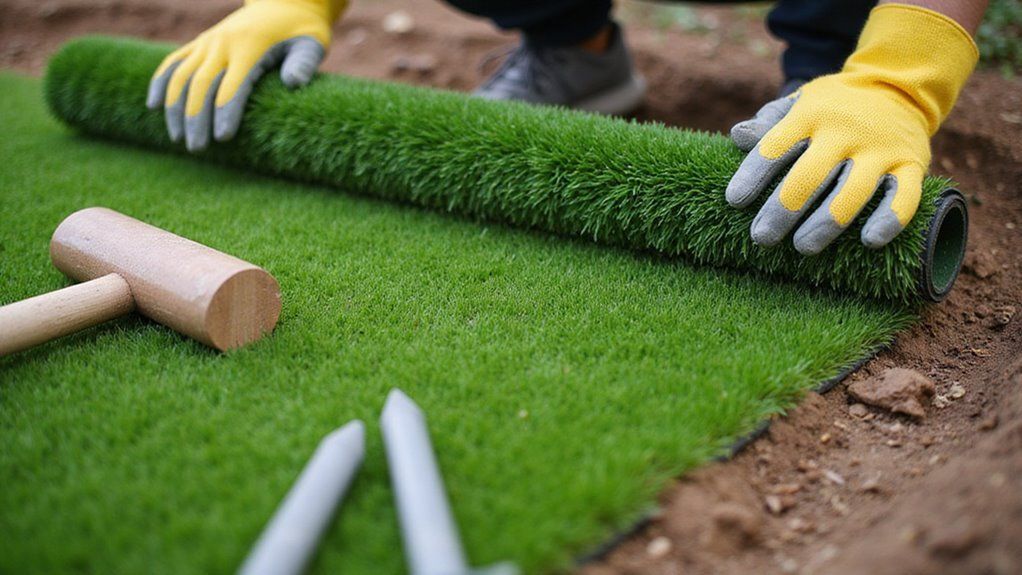
You’ll need to follow a precise sequence of steps to ensure your artificial grass installation meets Florida’s drainage demands and delivers long-term performance.
Begin by measuring your area, calling 811 to mark utilities, and removing existing vegetation before laying your weed barrier. From there, you’ll install a properly compacted base layer, position and secure your turf with galvanized fasteners, and apply professional seaming techniques to create a seamless, durable surface.
Measuring and Planning Your Layout
A proper layout requires accurate area measurements and a detailed plan before installation. Take measurements of the total space, including irregular shapes and obstacles. Consider all utility locations and existing features.
A minimum slope of 1 inch per 8 feet ensures proper drainage. Add 5-10% extra material to account for cuts and waste during installation. Always mark utilities by calling 811 first.
Map your turf roll placement carefully. Place seams away from main sight lines. A well-planned layout prevents waste and installation problems. Furthermore, good preparation leads to better results.
Laying the Weed Barrier
Roll landscape fabric across the prepared base to block weed growth. Overlap fabric seams by 6 to 8 inches for complete coverage without gaps. Place landscape staples every 2 to 3 feet to secure edges and seams.
As a safety measure, contact utility services before installation begins. The weed barrier creates a protective foundation between soil and artificial turf. This layer prevents unwanted plant growth and protects your investment.
Furthermore, quality barriers reduce maintenance needs over time. Professional installation ensures lasting results for your outdoor space.
Installing the Base Layer
A proper base layer ensures your artificial grass installation remains stable and drains effectively.
The base must achieve 90% compaction to support synthetic turf weight and prevent future settling. Check the surface for consistent grade and slope to allow proper drainage. Remove all debris and fill any voids that could trap water underneath. The ground should feel firm and solid when walked on.
Next, run a plate compactor across the entire area to guarantee uniform density. A minimum 2% slope away from structures maintains optimal drainage performance.
Placing and Securing the Turf
Roll artificial turf across the prepared base with blades facing the main viewing direction. Cut excess material carefully using a utility knife. Leave small overlaps at the seams for proper joining.
Install edge pieces with galvanized nails or landscape staples every 6 to 8 inches around borders. Apply seam tape and adhesive under joints to create seamless connections. Secure interior sections every 2 to 3 feet to prevent movement during storms.
For best results, check proper drainage slopes before final installation. A gentle slope helps water flow away from the turf surface.
Seaming Techniques for Seamless Appearance
Seaming artificial turf requires proper technique and materials to create invisible joints. The correct process starts with a 6-inch seam tape placed under the joining edges. Apply quality adhesive evenly across the tape surface. Press both turf edges down firmly into the glue. Avoid any gaps between sections.
Brush the turf fibers across the seam line to blend the joint naturally. This final step conceals the connection between grass sections. The result creates a smooth, seamless lawn appearance that looks completely natural.
Adding Infill Materials
Infill materials go between artificial grass blades to create stability and enhance performance. Spread silica sand, crumb rubber, or antimicrobial products at 2-3 pounds per square foot using a drop spreader. Work methodically across each section for even coverage.
A stiff broom helps settle the material between grass fibers. Regular infill maintenance prevents matting and extends the turf’s lifespan. Moreover, proper distribution improves drainage and reduces heat buildup in warm climates.
Brushing and Final Touches
Proper brushing helps synthetic grass look natural and maintains its appearance over time. A stiff brush should move against the grain of artificial turf fibers. This technique lifts matted fibers and evenly distributes infill material.
The final installation requires a water-filled roller pass across the entire surface at least twice. Thorough inspection ensures secure seams and proper edge attachment. Each section needs careful examination.
Monthly cleaning preserves the turf’s quality and extends its lifespan. Florida’s humid climate demands regular rinsing with mild soap solution every 30 days. Additionally, prompt removal of debris prevents matting and drainage issues.
How Long Will Your Installation Last?
Your artificial grass installation’s lifespan in Florida depends on proper sub-base preparation and ongoing maintenance practices.
A correctly installed crushed stone base with adequate drainage can extend turf longevity by up to 30%, while exposure to Florida’s intense UV radiation and heavy rainfall accelerates material degradation without proper care.
You’ll need to implement routine brushing and rinsing protocols to manage heat buildup and prevent debris accumulation that compromises synthetic fiber integrity.
Durability Factors in Florida Weather
Florida’s harsh weather conditions directly impact synthetic turf durability through UV exposure, humidity, and rain.
Turf installations need UV-stabilized fibers with a minimum 10,000-hour warranty to prevent deterioration. A proper drainage system protects the turf backing from water damage. Light-colored infill materials help manage surface temperatures in hot weather.
Moreover, regular maintenance ensures longevity. The turf requires initial watering to settle infill materials and periodic rinsing to remove debris. Perforated backing systems allow quick water drainage during storms. These features work together to extend the life of artificial grass in Florida’s challenging climate.
Maintenance Requirements for Longevity
Regular maintenance extends artificial grass lifespan to 15-20 years in Florida. Brush the surface every 2-3 weeks to keep fibers upright and maintain proper drainage. A monthly rinse with a garden hose removes debris and prevents mold growth.
Check infill levels every three months to maintain 2-3 pounds per square foot. Clean spills promptly with approved pH-neutral cleaners. Additionally, proper care prevents permanent stains and backing damage.
This basic upkeep schedule ensures your artificial turf stays attractive and functional throughout its expected lifespan. Furthermore, consistent maintenance protects your investment and reduces long-term replacement costs.
What Maintenance Does Artificial Grass Require?
Artificial grass needs regular but simple maintenance to stay in good condition.
A monthly check helps spot loose edges and worn adhesives before they become problems. Twice-monthly rinsing keeps the surface clean and drains working properly. Every three months, brush the grass to maintain its upright position.
Regular care prevents bigger issues. The key tasks include removing debris, redistributing infill material, and inspecting seams. A yearly review of the base layer ensures lasting stability. These basic steps help artificial grass remain attractive and functional for many years.
Ready to Transform Your Lawn with Synthetic Turf Treasure Coast?
Synthetic turf can transform your Treasure Coast lawn with proper planning and professional help.
Professional installation ensures lasting results for your artificial grass project. Local regulations require precise 1-inch-per-8-foot slope grading for proper drainage. Florida law mandates utility checks through 811 before any installation begins.
Moreover, certified installers understand local soil conditions and HOA requirements. They properly place weed barriers, compact stone bases, and secure edges. These steps prevent future issues and maximize your investment.
To get started, choose a qualified Treasure Coast specialist who can handle permits and technical details.
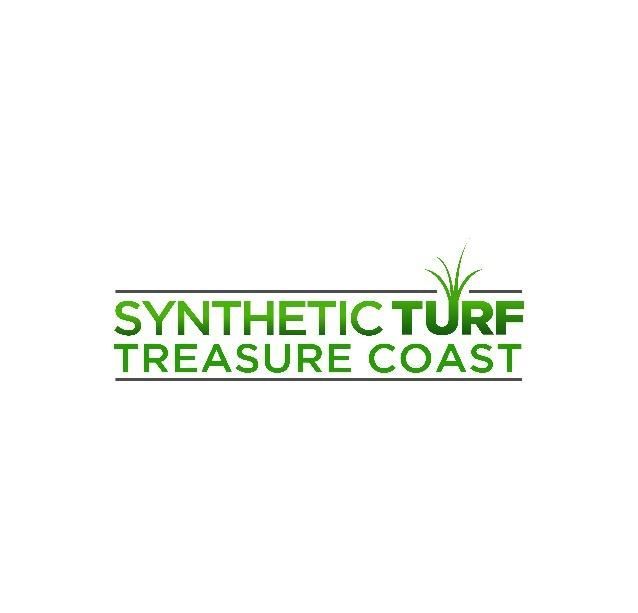
About the author
Kathy Leavell
Kathy Leavell is the founder and owner of Synthetic Turf Treasure Coast, a leading provider of synthetic grass solutions for residential and commercial properties in Florida. With over a decade of experience in the industry, Kathy has become a recognized expert in synthetic turf installation, maintenance, and repair. Under her leadership, Synthetic Turf Treasure Coast has earned a reputation for exceptional customer service and high-quality workmanship.
Prior to starting her own business, Kathy worked in sales and marketing roles at several major synthetic turf manufacturers.
